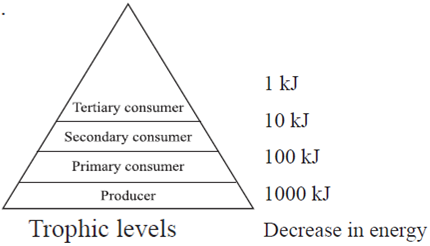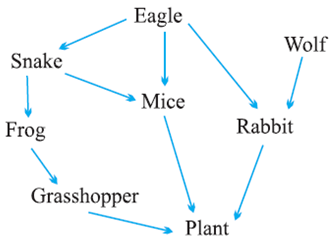CBSE
Class 10 Class 12
The ecosystem includes both living (biotic) and non-living (abiotic) components.The interaction between these biotic and abiotic components form an ecosystem.
Types of the ecosystem: It is of two types :
Abiotic Components: All the non-living components such as air, water, land, light, temperature etc. form the abiotic components.
Biotic Components: All the living components such as plants, animals, bacteria, fungi etc. form the biotic components.
On the basis of nutrition, biotic components are further divided into :
Producers: All green plants and blue-green algae can produce their own food using abiotic components (photosynthesis), hence called producers.
Consumers: Include all animals which depend on producers directly or indirectly for their food.
Consumers are further divided into:
Herbivores: Plant-eaters e.g., goat, deer.
Carnivores: Flash eaters e.g., tiger, crocodile.
Omnivores: Eats both plants and animals e.g., human.
Parasites: Live on the body of the host and take food from it e.g., lice, Cascata.
Decomposers: Include organisms which decompose the dead plants and animals e.g., bacteria, fungi. These help in the replenishment of natural resources.
A food chain in an ecosystem is a series of organisms in which each organism feeds on the one below it in the series.
The primary consumer is then eaten by a secondary consumer. And the secondary consumer may be eaten by a tertiary consumer, and so on.
In a forest ecosystem, grass is eaten by a deer, which in turn is eaten by a tiger. The grass, deer and tiger form a food chain. In this food chain, energy flows from the grass (producer) to the deer (primary consumer) to the tiger (secondary consumer).
A food chain always begins with producers and then come next in the chain.
Some common food chains are mentioned below:
Plants → Deer → Lion
Plants → Worm→ Bird → Cat
Plants→ Grasshopper→ Frog→ Snake→ Hawk
Algae→ Small→ animal → Small fish → Big fish —> Bird
The food web defines the energy flow through species of a community as a result of their feeding relationships.
The flow of energy between trophic levels

The flow of energy in a food chain is unidirectional.
Green plants capture 1% of sunlight and convert it into food energy.
10 percent law: Only 10% of energy is transferred to the next trophic level. The remaining 90% energy is used in life processes (digestion, growth, reproduction etc.) by present trophic level.
Due to this gradual decrease in energy, food chains contain 3-4 trophic levels.
Food web: In nature, large numbers of food chains are interconnected forming a food web.

Biological magnification: The concentration of harmful chemicals increases with every next trophic level in a food chain. This is called biological magnification.
The levels of magnification are not same in all trophic levels. The chemicals are not degraded and get accumulate progressively at each trophic level which leads to biomagnification.
The maximum concentration of such chemicals gets accumulated in human bodies as human occupy the top level in any food chain.